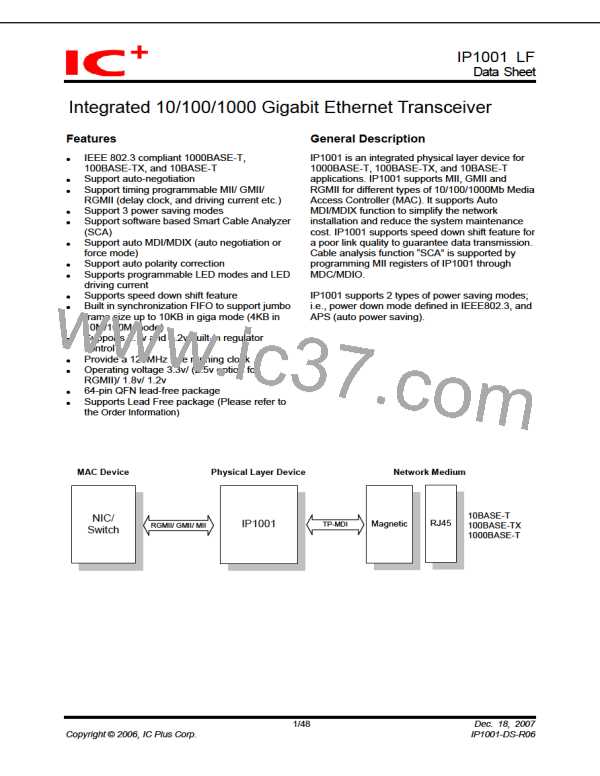IP1001 LF
Data Sheet
3.7
Auto-Negotiation
IP1001 will performs Auto-Negotiation automatically if one of the following conditions happened:
1) Power up reset, hardware reset, or software reset (by programming MII register 0.15).
2) Restart Auto-Negotiation (by programming MII register 0.9).
3) Transition from power down to power up (by programming MII register 0.11).
4) Link is down.
Once Auto-Negotiation is initiated, IP1001 sends out the appropriate base pages/ next pages to advertise its
capability and negotiate with the link partner to determine speed, duplex, and master/slave. Note that IP1001
handles the base page/ next page exchanges automatically without user intervention. To link at giga mode,
the link partner of IP1001 has to support Auto-Negotiation, too. Once IP1001 completes Auto-Negotiation it
updates the statuses in registers 1, 5, 6, 10 and 17. The advertised abilities can be changed by writing
registers 4 and 9. It is noted that a write access to register 4 or 9 has no effect once the IP1001 begins
transmitting Fast Link Pulses (FLPs). This guarantees that the transmitted FLPs are consistent. Register 7 is
treated in a similar way as registers 4 and 9 during additional next page exchanges.
If the link partner doesn’t support Auto-Negotiation, IP1001 determines the link speed using parallel detection
and the link result is either 10M half duplex or 100M half duplex. Please refer to IEEE 802.3 clause 28 and 40
for more detailed description of Auto-Negotiation.
Auto-Negotiation can be disabled by programming register 0.12. When Auto-Negotiation is disabled, the
speed and duplex of IP1001 can be changed by programming registers 0.13, 0.6 and 0.8, respectively.
23/48
Dec. 18, 2007
IP1001-DS-R06
Copyright © 2006, IC Plus Corp.

 ETC [ ETC ]
ETC [ ETC ]